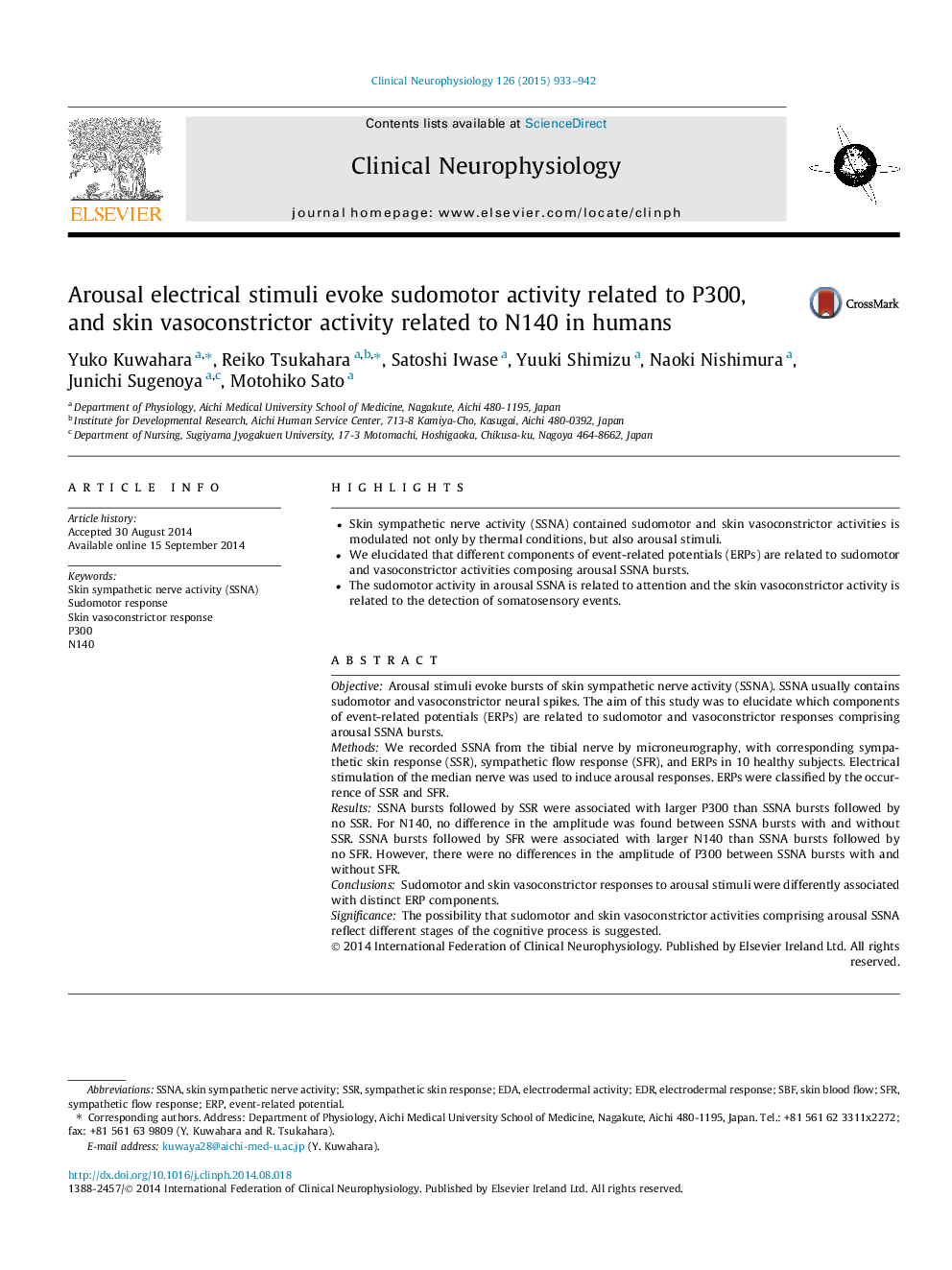| Article ID | Journal | Published Year | Pages | File Type |
|---|---|---|---|---|
| 3042786 | Clinical Neurophysiology | 2015 | 10 Pages |
•Skin sympathetic nerve activity (SSNA) contained sudomotor and skin vasoconstrictor activities is modulated not only by thermal conditions, but also arousal stimuli.•We elucidated that different components of event-related potentials (ERPs) are related to sudomotor and vasoconstrictor activities composing arousal SSNA bursts.•The sudomotor activity in arousal SSNA is related to attention and the skin vasoconstrictor activity is related to the detection of somatosensory events.
ObjectiveArousal stimuli evoke bursts of skin sympathetic nerve activity (SSNA). SSNA usually contains sudomotor and vasoconstrictor neural spikes. The aim of this study was to elucidate which components of event-related potentials (ERPs) are related to sudomotor and vasoconstrictor responses comprising arousal SSNA bursts.MethodsWe recorded SSNA from the tibial nerve by microneurography, with corresponding sympathetic skin response (SSR), sympathetic flow response (SFR), and ERPs in 10 healthy subjects. Electrical stimulation of the median nerve was used to induce arousal responses. ERPs were classified by the occurrence of SSR and SFR.ResultsSSNA bursts followed by SSR were associated with larger P300 than SSNA bursts followed by no SSR. For N140, no difference in the amplitude was found between SSNA bursts with and without SSR. SSNA bursts followed by SFR were associated with larger N140 than SSNA bursts followed by no SFR. However, there were no differences in the amplitude of P300 between SSNA bursts with and without SFR.ConclusionsSudomotor and skin vasoconstrictor responses to arousal stimuli were differently associated with distinct ERP components.SignificanceThe possibility that sudomotor and skin vasoconstrictor activities comprising arousal SSNA reflect different stages of the cognitive process is suggested.
